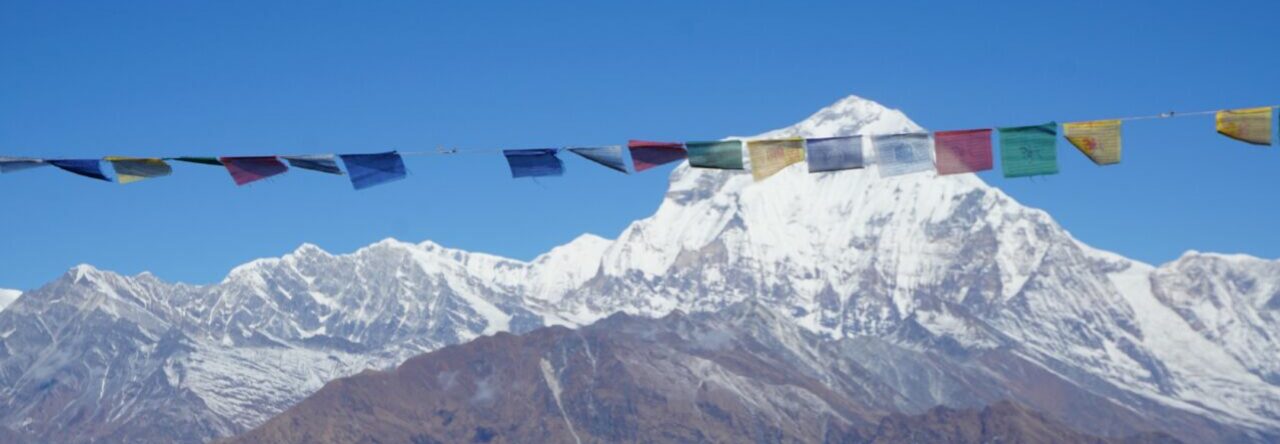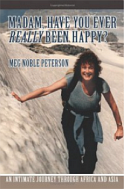I’m sure you’re all aware of the brutal crackdown by the Chinese of the Tibetans in Lhasa and elsewhere, as they protest Chinese occupation on the anniversary of the 1959 uprising against Chinese rule that forced the Dalai Lama to flee to India. Similar demonstrations are going on around the world. They are also protesting the increasing numbers of Chinese who are being transported as immigrants into Tibet to obliterate the ancient and beloved customs and religion of the Tibetan people. This makes me heartsick, as did the crackdown of the Burmese people last Fall by their military junta, supported in large part by China. It also makes me wonder if the West will step up and fight for human rights against a dictatorial regime that is not only incarcerating its own (dissident) citizens, but reaching out to crush other cultures who won’t bow to its will. Are we so wedded to business and trade as usual that we’ve lost sight of common decency and humanity?
My daughter, Martha, who, like other members of our family, has adopted a Tibetan student in India, sent me this website, which I pass on to you. It has up-to-the-minute news about what is unfolding in Tibet and around the world, and videos that will make you cry. But they need to be seen.www.phayul.com There is also a front page story in the NYTimes today, March 15. All of you who have traveled in Tibet, Nepal, and China will be interested in the pictures and the story.
The Polish government has already called for a boycott of the Olympics – and given a deadline for negotiations with His Holiness, the Dalai Lama. That is one brave government. But, as Martha pointed out, they lived under communist repression for decades and are willing to fight anyone’s war against repression. God bless them.
Several months ago, my daughter, Cary, wrote about the pollution she was experiencing in Chengdu, China (see her blog: www.carypeterson.wordpress.com) . Shortly after that, articles began appearing in the paper and sports magazines about the danger to our athletes from the terrible air quality around Beijing. I was going to write to the Olympic Committee and to Al Gore suggesting that all our athletes appear in China wearing surgical masks. What a great statement! But since then, this has become a mainstream idea and suggested by various couches of the Games. How awful to think that we cannot use the threat of removing the Olympic games from China as leverage to promote clean air as well as to let the Tibetans live in peace. Or can we? How do we make our voices be heard? Richard Gere has already started the momentum on the above-mentioned website, but perhaps we should all write to our Senators and Congressmen, asking for some action, and then to the Clinton and Obama campaigns, asking them how they would respond to this issue were either of them president.
It may be a long shot, but we can’t sit around and do nothing.
It’s now March 16 and there are more articles on the front page of the New York Times and other publications about the widespread protests by the Tibetans. In reading about the actions of the Indian police I was touched by a remark made by one of the young Tibetans that it was Ghandi who had inspired his non-violence and he could not understand what has happened to India to make them react so brutally.
Last year, on March 10, Cary and I witnessed a peaceful march starting in Dharamsala in the driving rain. This was the same anniversary that sparked the protests this year, but the difference is that this year marks almost 50 years of repression. The marchers were greeted in Namgyl Temple by the Dalai Lama and the wind was so fierce that buckets of rain water, that had collected in the cloth awnings above the courtyard, blew down like a giant shower over the participants. Nobody was daunted. The mood was positive and the singing joyous. Spirits could not be dampened. In the evening, when the marchers returned from visiting nearby villages, the rain had subsided and there was a solemn line of marchers carrying white candles and chanting.
Even the sports pages are carrying news that the two routes to Mt. Everest are scheduled to be off limits to mountaineers from May 1-10 this year, the prime window of opportunity climbers depend on to get to the summit…between the fierce winter storms and the monsoon season…as Beijing prepares to inaugurate the Summer Olympics free of pro-Tibetan protests. Climbers and trekking companies are outraged that they must wait while the Olympic torch bearers carry the flame to the summit of Everest and down through Tibet to Beijing. This is an almost impossible task, due to the need for acclimitization at such altitudes, but the Chinese seem willing to take the risk, sending a hundred climbers, if necessary, in the hope that some will make it. And the Nepalese are going along with it, much to the dismay and anger of outfitters who had planned to start their climbing preparations in Kathmandu in mid-April.
Who knows how this will end, but the Chinese are definitely suffering from worldwide disapproval. Let’s hope that it doesn’t lead to genocide.




